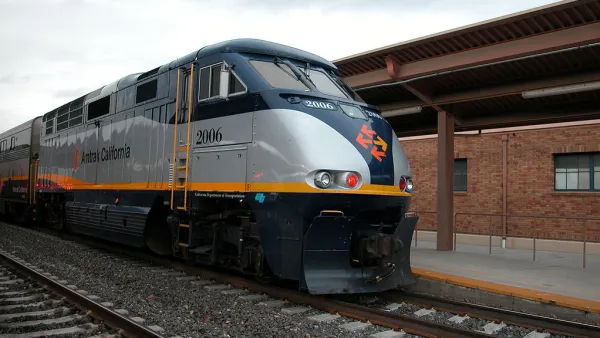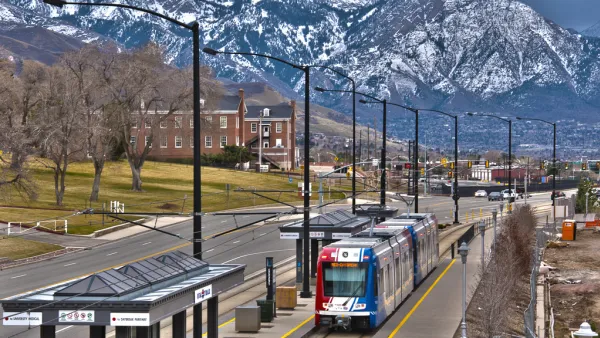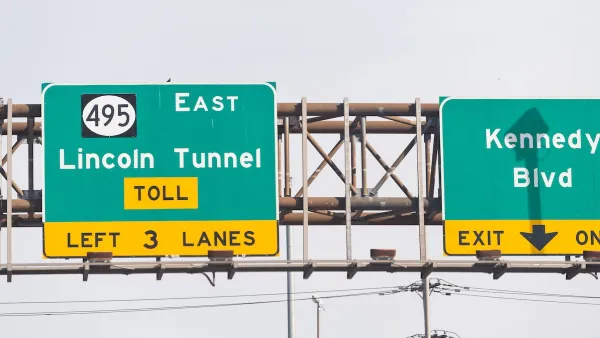It's not quite as simple as Republicans opposing transit and Democrats supporting it. It depends what level of government is discussing it. On the local level, demand for better transit can transcend partisan divides.
"Democrats generally want more investment," writes Kellie Mejdrich of Roll Call. "Some Republicans question whether the federal government should even be involved."
Step into a city council chamber, however, and you’ll hear something different. Growing interest in public transit, especially among young people, has local officials clamoring for the federal government to fund transportation.
“America needs something new,” Salt Lake City Mayor Ralph Becker (Democat) told fellow mayors and other city officials in Washington, D.C., at the National League of Cities’ annual summit earlier this spring. [Note "livability agenda" on Becker's homepage]. “We certainly have been, in the last half century, a country whose surface transportation has evolved around the vehicle. ... This vision has run its course.”
Mejdrich writes about the popularity of Salt Lake City's 45-mile light rail system, TRAX and the two-and-a-half mile Sugar House Streetcar. "To ignore these changes, and not adapt to them and not invest intelligently with federal transportation dollars, to me, is a real misplacement of taxpayer dollars," Becker said.
The feds are not listening—the lawmakers, that is.
Therese W. McMillan, acting director of the Federal Transit Administration (FTA), points to an $86 billion transit maintenance backlog for "she said would grow by $2.5 billion a year if it’s not addressed," writes Mejdrich.
For fiscal 2015, about 15 percent of what’s spent from the fund will go to transit and 85 percent to highways, according to the Congressional Budget Office.
With Republicans controlling both houses of Congress, maintaining the 15 percent level for transit may be a battle in itself as Congress struggles to fund either the next patch bill or a six-year authorization bill by July 31 when the current funding extension ends.
Hat tip: Tanya Snyder, StreetsblogUSA
FULL STORY: Mass Transit Loved by Locals, but Tough for Feds

Analysis: Cybertruck Fatality Rate Far Exceeds That of Ford Pinto
The Tesla Cybertruck was recalled seven times last year.

National Parks Layoffs Will Cause Communities to Lose Billions
Thousands of essential park workers were laid off this week, just before the busy spring break season.

Retro-silient?: America’s First “Eco-burb,” The Woodlands Turns 50
A master-planned community north of Houston offers lessons on green infrastructure and resilient design, but falls short of its founder’s lofty affordability and walkability goals.

Test News Post 1
This is a summary

Analysis: Cybertruck Fatality Rate Far Exceeds That of Ford Pinto
The Tesla Cybertruck was recalled seven times last year.

Test News Headline 46
Test for the image on the front page.
Urban Design for Planners 1: Software Tools
This six-course series explores essential urban design concepts using open source software and equips planners with the tools they need to participate fully in the urban design process.
Planning for Universal Design
Learn the tools for implementing Universal Design in planning regulations.
EMC Planning Group, Inc.
Planetizen
Planetizen
Mpact (formerly Rail~Volution)
Great Falls Development Authority, Inc.
HUDs Office of Policy Development and Research
NYU Wagner Graduate School of Public Service




























